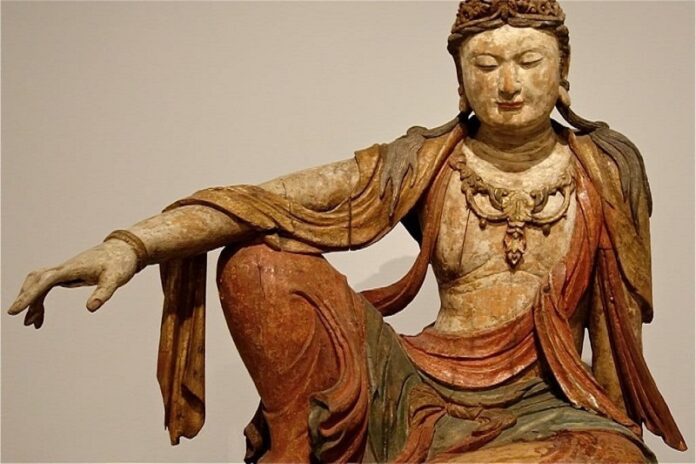Introduction:
Drink to our blog devoted to exploring the profound conception of the Bodhisattva. In Mahayana Buddhism, the Bodhisattva represents the zenith of compassion and selfless fidelity to the weal of all cognizant beings. This blog will claw into the substance of Bodhisattva practice, offering perceptivity, guidance, and alleviation for those interested in walking the path of compassion and awakening.
Embracing the Bodhisattva Ideal
In this composition, we will claw into the foundational aspects of the Bodhisattva ideal. We will bandy the Bodhisattva’s unvarying commitment to easing suffering, their selfless provocation, and the aspiration to attain enlightenment for the sake of all beings. Through exploring the Bodhisattva’s noble rates, we can gain a deeper understanding of their significance in the Buddhist tradition.
The Path of Compassion
Compassion lies at the heart of Bodhisattva practice. This composition will explore the transformative power of compassion, its part in the Bodhisattva’s trip, and practical ways to cultivate compassion in our own lives. We will bandy the Bodhisattva’s compassionate connection with all beings and the profound impact of compassionate action in our world.
Bodhisattva Vows A Commitment to Service
The Bodhisattva’s path is marked by promises, and guiding principles that shape their conduct and intentions. We’ll explore the Bodhisattva promises, including the Four Great Promises and the Bodhisattva’s aspiration to liberate all beings. We will bandy how these promises can serve as a moral compass, inspiring us to engage in acts of kindness, liberality, and wisdom.
Bodhisattva Archetypes Illuminating Compassionate Wisdom
In this composition, we will examine colorful Bodhisattva archetypes, similar to Avalokiteshvara, Manjushri, and Ksitigarbha, each embodying different rates and aspects of compassion. By exploring these archetypes, we can gain a deeper appreciation for the various ways in which the Bodhisattva’s wisdom and compassion are expressed.
The Bodhisattva’s Path in Daily Life
Bodhisattva practice extends beyond contemplation cocoons and tabernacle walls. This composition will explore how we can integrate the Bodhisattva’s principles and stations into our diurnal lives. We will bandy practical ways to bring compassion, wisdom, and altruism into our connections, work, and engagement with the world.
Conclusion
The path of the Bodhisattva is an assignment to transcend tone-centeredness and embrace the interconnectedness of all life. Through cultivating compassion, wisdom, and selflessness, we can embark on a transformative trip that benefits both ourselves and others. We hope this blog serves as a source of alleviation, guidance, and stimulant for those who aspire to walk the noble path of the Bodhisattva.
Flashback, each step we take on this path brings us near to realizing our ingrained eventuality for enlightenment and getting a lamp of compassion and wisdom in the world.
Stay tuned for unborn papers as we continue to explore the depths of the Bodhisattva’s path.
What is a Bodhisattva?
The compassionate Buddhist Goddess who walks among us.
A Bodhisattva is a Buddhist deity who has attained the loftiest position of enlightenment, but hesitates to lift to heaven in order to help the bound on earth Known in Sanskrit as Avalokitesvara, the Bodhisattva assumes the form of manly and womanish, a it’s associated with rates of mercy and compassion; Her Chinese icon , Guanyin – always represented as womanish – translates as ‘ entering sound ’. Buddhists believe that Guanine can hear the cries of all those suffering on earth and guide them to deliverance.
The earliest source of the teachings of Avalokitesvara is found in Chapter 25 of the Lotus Sutra, one of the foundational texts of Mahayana Buddhism, which originated in India in the early 1st century. Other accounts say that the eyes of this Bodhisattva were born of the sun and the moon. The ideas and images associated with the Watched God have had a particular influence on Chinese and Japanese literature, such as The Tale of Genji by 11th-century nobleman Murasaki Shikabu, which tells the story of the son of an ancient Japanese emperor it’s lovely, picaresque.
This statue of Avalokiteshvara, now on display at St. Louis Museum depicts a seated Bodhisattva, legs crossed as if in meditation on single-stick sculptures, decorated with quartz and carnelian, made in China during the Late Song Dynasty ( 960-1127 an there is).

